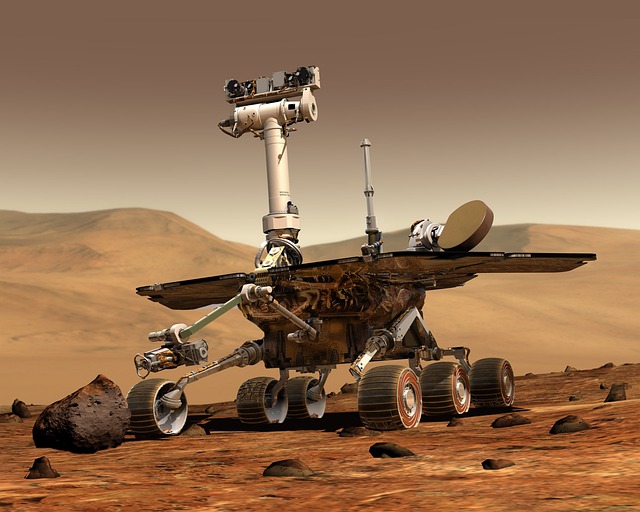Operational Shifts: Enabling Scalable AI Adoption
Successfully scaling AI operations in 2024 requires more than advanced tech stacks. It demands strategic experimentation, organizational agility, and tighter collaboration across departments. CTOs are steering this transformation by aligning systems, people, and processes.
Balancing Experimentation with Scalability
Before enterprise-wide AI implementation, smart leaders are testing focused pilot use-cases. These trial projects help establish feasibility, minimize risk, and uncover early lessons.
- Launch small-scale experiments to validate assumptions
- Use results to inform broader deployment decisions
At the same time, infrastructure must be built for long-term growth. This includes designing systems with modular components that can adapt as AI capabilities mature.
- Build flexible and upgradable architectures
- Avoid monolithic systems that resist evolution
Talent Development and Team Restructuring
As AI shifts engineering and operations priorities, upskilling becomes essential. Traditional teams need fluency in automation tools, data-based reasoning, and rapid prototyping.
- Invest in AI-focused training programs for technical and non-technical staff
- Encourage continuous learning around evolving toolsets
Organizational structure also needs to change. Many companies are restructuring to support an automation-first mindset, making room for hybrid roles that blend tech and strategy.
- Realign teams to break down silos
- Create strategic roles focused on AI implementation and governance
Cross-Department Collaboration
AI-driven operations touch every corner of the business. That’s why CTOs are deepening connections with HR, compliance, finance, and operations.
- Incorporate cross-functional teams into automation planning
- Ensure regulatory, ethical, and operational needs are addressed from day one
Scalable AI is no longer just a tech initiative. It’s a business-wide imperative, and success hinges on alignment across leadership and execution layers.
Automation isn’t coming. It’s already here, and it’s moving fast. Across nearly every industry — from logistics to media — systems are being streamlined, workflows compressed, and repetitive work handed off to machines. The promise isn’t just about getting faster. It’s about staying in the game.
As this shift builds momentum, CTOs have become the throttle and the steering wheel. They’re not just implementing tech. They’re setting the pace. Companies are looking to them to decide what gets automated, what stays human, and how to scale those choices fast. It’s a tough balance, but the goals are clear: make operations lean, ensure adaptability, and reduce lag in decision-making.
This isn’t just about shaving costs or looking modern. At this point, automation gives companies a serious edge. And for others, it’s the only way they survive what’s next. CTOs who understand both the tools and the tempo are leading the charge — and the gap between them and the rest is starting to show.
Laying the Groundwork for Scalable Automation
Before AI and automation can deliver, companies need the right technical foundation. That starts with infrastructure. Legacy systems, built for static workflows, can’t handle the pace of today’s machine learning tools. Many organizations are now racing to modernize—rewriting codebases, shifting to microservices, and bolting on APIs like scaffolding. Cloud agility is no longer a nice-to-have. Hybrid environments are the new standard, blending on-prem precision with offsite flexibility.
Security is moving up the priority list too. Automation broadens the attack surface. More moving parts mean more openings. CTOs are responding by leaning into AI-driven security models that flag anomalies early and adjust on the fly. The focus has shifted from reactive patches to proactive design.
Then there’s the data. AI doesn’t work without clean fuel. Training models on noisy or biased inputs leads to junk results. Smart teams are investing heavily in data governance—labeling, versioning, anonymizing—so their systems make good decisions from day one. No shortcuts here. If the data’s flawed, the automation fails.
Automation starts behind the curtain. Get infrastructure, security, and data right first—or expect headaches later.
Automation Isn’t a Silver Bullet
Automation is a powerful tool—but its success depends on more than just plugging in new platforms or tools. Many teams face real-world complications that slow down progress or derail intended outcomes.
Common Roadblocks to Automation
Before realizing any ROI, organizations must first handle the foundational issues that get in the way of successful automation:
- Scope creep: Projects often expand beyond the original plan without clear justification, leading to budget and delivery problems.
- Technical debt: Legacy systems, makeshift solutions, and outdated processes can delay implementation.
- User resistance: Employees may resist change when it disrupts familiar workflows or increases perceived complexity.
Automation Demands Strategy and Patience
Even with the right tools in place, automation is not a plug-and-play fix. It requires thoughtful planning and time to produce meaningful results.
- Iteration is key to refining automated flows.
- Success typically involves multiple phases of testing and adjustment.
- Teams should set realistic milestones and avoid rushing deployments.
Focus on Value, Not Just Trends
Jumping on automation trends without considering the long-term business strategy is a costly mistake. Trends may generate buzz but can quickly divert resources from what actually drives growth.
- Always connect automation initiatives to measurable business outcomes.
- Avoid automating for the sake of appearing innovative.
- Take time to evaluate whether a proposed solution aligns with core operational goals.
Automation can be transformative—but only when approached with a clear plan, realistic timelines, and business-aligned intent.
Navigating Global Regulation with Compliance Built into Design
AI is moving fast, but regulators aren’t sitting back. Around the world, governments are pushing for more oversight on how machine learning is developed, deployed, and explained. For vloggers leveraging AI tools—from auto-editing to analytics—this matters more than you think.
In 2024, building compliance into your creative stack isn’t optional. It needs to be baked into your process, not bolted on later. That means choosing tools and platforms that prioritize data privacy, give users control over how systems learn, and are upfront with what their models actually do. Transparency matters. So does explainability. If an AI recommends a cut or suggests a clip to repost, vloggers should know why.
And bias? It’s not a theoretical problem. Algorithmic blind spots can creep into everything from auto-captioning to comment moderation. Responsible creators know this and are asking better questions about the tools they use.
Governance isn’t just for enterprise software. Business-minded content creators are starting to treat AI choices like business decisions—with risk assessments, guardrails, and standards that still leave room for creativity.
Want to go deeper into how regulatory trends are reshaping creator tech? Check out Expert Opinions on Regulating Artificial Intelligence Responsibly.
Enterprises are no longer just experimenting with AI. They’re deploying systems that make real decisions—about pricing, logistics, hiring, even customer service resolutions. This is a big leap. It means businesses need to prepare their infrastructure and culture for autonomous decision-makers who don’t clock out and don’t get tired.
The core issue isn’t just about what these systems can do. It’s about who owns the outcomes. When AI acts, who’s responsible? Forward-thinking companies are starting to build out frameworks to answer that. Clear accountability structures, documented AI governance policies, and continuous audit trails are becoming standard, not optional.
ROI also shifts in this context. It’s not just a matter of efficiency gains. It’s about trust, adaptability, and the ability of leadership to ask the right questions of invisible logic.
In short, leaders can’t just be tech adopters. They have to know when to delegate to AI, when to intervene, and how to communicate those choices transparently. This isn’t just about smarter systems. It’s about building the kind of leadership that’s ready for them, too.


 Lorissa Ollvain is a tech author and co-founder of gfxrobotection with expertise in AI, digital protection, and smart technology solutions. She is dedicated to making advanced technology accessible through informative, user-focused content.
Lorissa Ollvain is a tech author and co-founder of gfxrobotection with expertise in AI, digital protection, and smart technology solutions. She is dedicated to making advanced technology accessible through informative, user-focused content.

